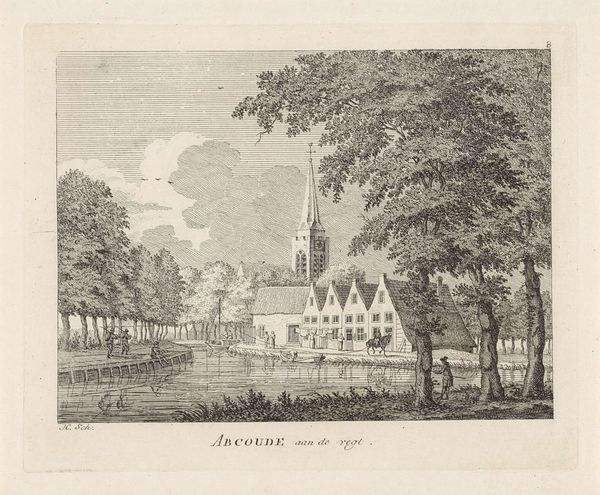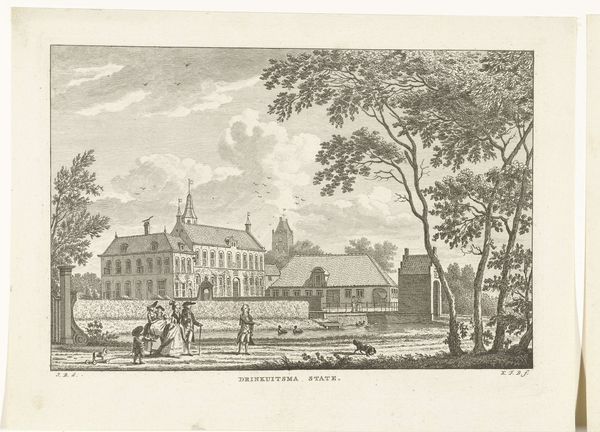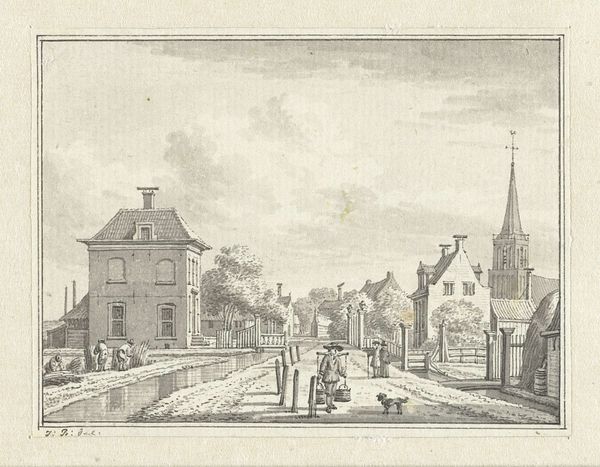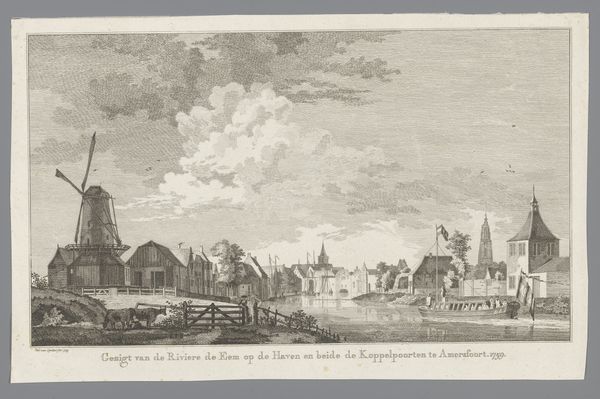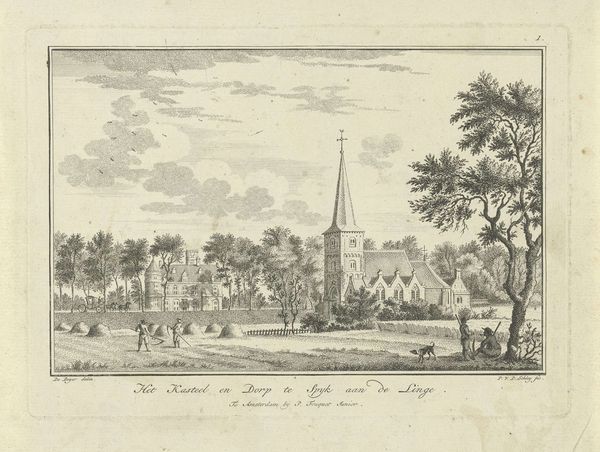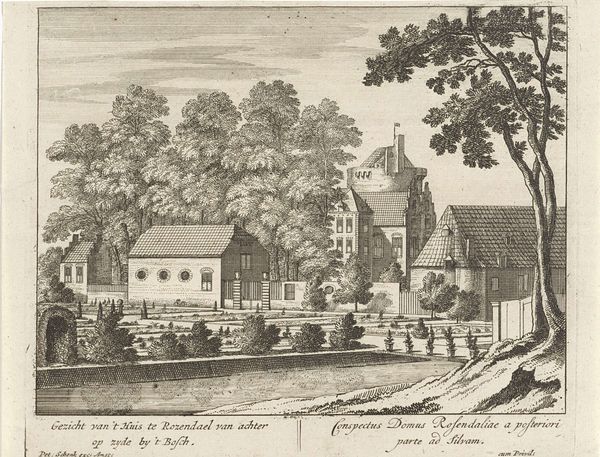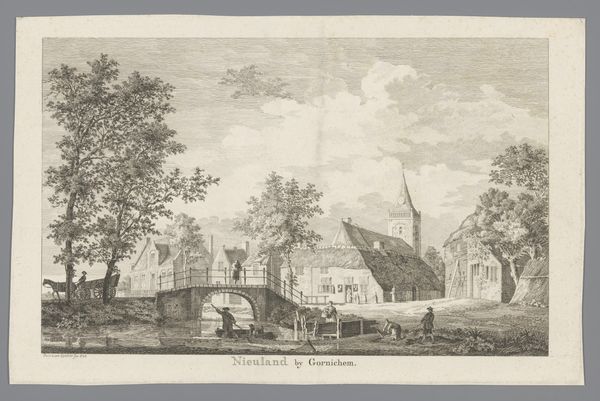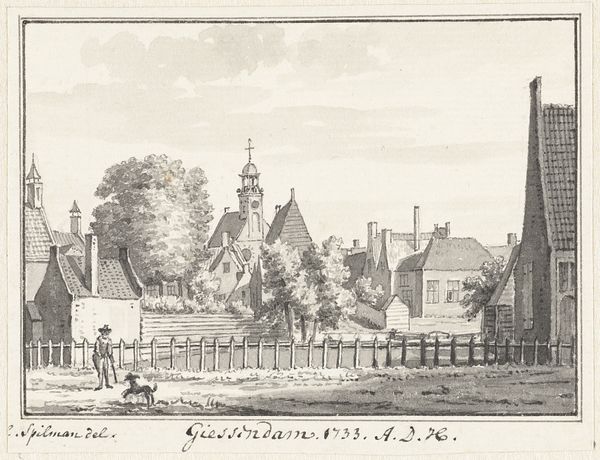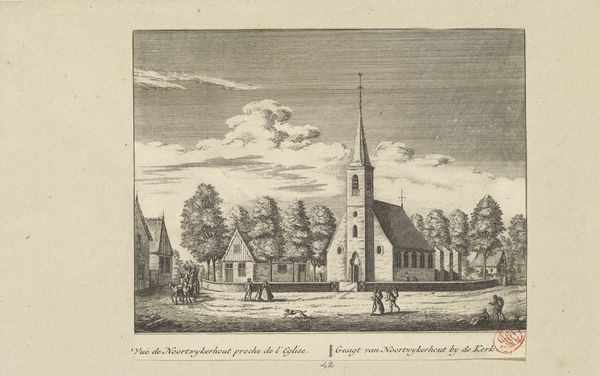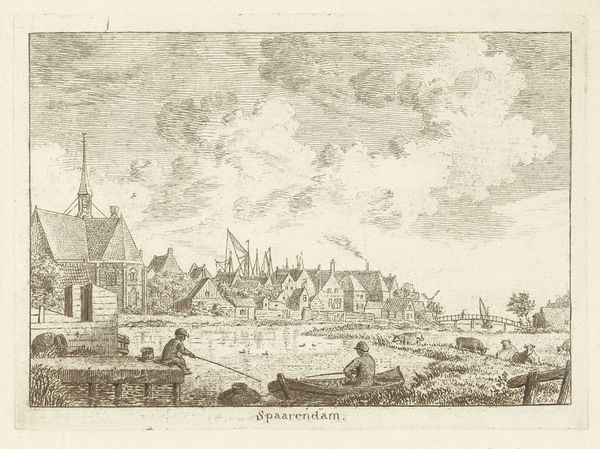
print, engraving
#
dutch-golden-age
# print
#
landscape
#
cityscape
#
engraving
Dimensions: height 80 mm, width 115 mm
Copyright: Rijks Museum: Open Domain
This is Abraham Rademaker's "Gezicht op Zoeterwoude," created in 1652, an etching on paper. The composition centers on the village church, its spire a vertical counterpoint to the horizontal landscape. Note how Rademaker uses line to define form; delicate strokes create texture in the foliage and water, while firmer lines delineate the architecture. Rademaker's print operates within a visual language rooted in Dutch Golden Age aesthetics. The etching technique, with its emphasis on linear precision, mirrors the period's interest in detailed observation and representation. The artwork's formal structure, with its balance and clarity, reflects a world seen through the lens of reason and order. Consider how the interplay of light and shadow—achieved through the density of the etched lines—creates a sense of depth, drawing the viewer into the scene. This use of chiaroscuro functions not merely as a descriptive tool but as a semiotic device, hinting at the complex relationship between visibility and knowledge that characterized the Enlightenment era. The detailed lines invite ongoing interpretation.
Comments
No comments
Be the first to comment and join the conversation on the ultimate creative platform.

